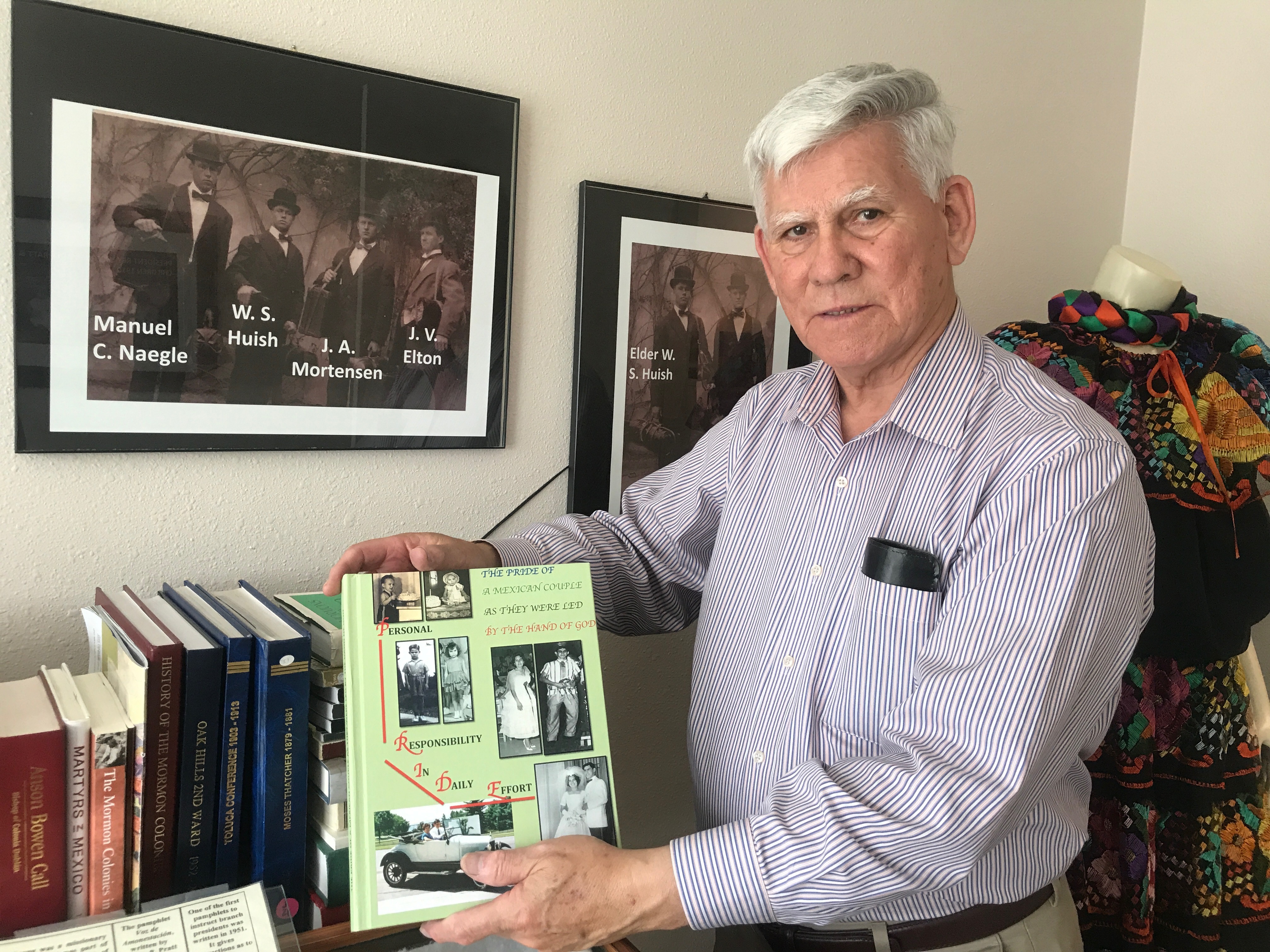
Read a Spanish translation of the article here.
Fernando Gomez points to an old black-and-white photo of a group of people with George Albert Smith, taken in 1946 in Mexico City. He points to a boy in the front row.“That’s me,” he says.
The photo can be found in the Museum of Mormon History of the Americas, located on Canyon Road by BYU. Gomez likes to refer to himself as the “only living artifact” in the museum.
The museum was originally established in Mexico City, using a collection of historical artifacts and accounts that Gomez’s aunt, Consuelo Gomez Gonzalez, had collected over her lifetime. Eventually, Gomez relocated the museum to Provo, just west of BYU campus.
Gomez said “it feels pretty good” to share his and his family’s history with visitors.
Gomez’s family first became involved with the Church of Jesus Christ of Latter-day Saints in 1823 when his grandmother and other members of the family met some missionaries. “We go back a long way in the gospel,” said Gomez.
Gomez never planned on opening a museum. Originally from Monterrey, Mexico, he immigrated to Texas with his family as a young child. Eventually, he came to Provo and attended BYU. In 1967, he graduated with a degree in electrical engineering. Then life took him and his wife, Enriqueta Gomez, away from Utah for 40 years.
Church service has taken them across the world. Gomez served as an area seventy in the Philippines; president of the Mérida, Mexico temple; president of the Chile Missionary Training Center; and in various other callings in the U.S. and Mexico.
“People always play down Fernando,” said Museum Assistant Director Esperandieu Anofils. When visitors find out Gomez’s various positions in the church and all the work he’s done they’re “shocked.”
Anofils said Gomez and his wife are “people who have done stuff — they know what they’re doing. … That’s the main reason I stay, because of Fernando.”
Gomez himself is much more humble. “We have built this from no knowledge on anything to do with museums,” Gomez said. “We’re still learning.” He credits his wife’s support and the Lord as the forces that have seen the museum through the 28 years he’s been involved.

Despite being initially unprepared for the task of running a museum, Gomez doesn’t seem to regret the choices he’s made.
“My favorite thing is the people that come,” said Gomez. “People can’t believe what they see in here. That’s the satisfaction, that they see and feel a spirit of history, of doctrine here. That’s my reward.”
For many visitors, interacting with Gomez is one of the best parts of touring the museum.
“My favorite part was talking to Fernando and hearing him and his enthusiasm for the history of the church and specifically the Mexican church history,” said Robert Rex, a first-time visitor to the museum.
“It’s cool because he’s a part of the history. So it’s living history in a way. He was there,” said Rex. “I could tell he is very genuine in his desires and motive to be here. “
For many visitors, the museum is their first exposure to the stories found inside. According to Anofils, the stories housed in the museum are “a forgotten history” that few people know about, but they are an “integral part of the history of Mormonism.”
Anofils said that many people are only aware of Mormon history in the United States. “People think the history of Mormonism started in Nauvoo, stopped in Salt Lake City.”
He feels the reason many church members are unaware the of the church’s history outside of the U.S. is that “the average member is not ready to view the church as an international church.”
“It’s difficult to imagine a, I don’t know, an African guy telling you what to do in Payson, Utah, as the mission president. But a mission president from Payson, Utah, can go to Nigeria and tell them what to do,” he said.
Anofils hopes that the work they do at the museum will help change the public’s view on this. To many who visit, the museum is fulfilling that responsibility.
“In a way, it was more my history than I realized,” Rex said as he reflected on the similarities between his own ancestors who crossed the plains to come to Salt Lake and the individuals he learned about in the museum.
Though their stories are not well known, the dedication and sacrifice those early Mexican Latter-day Saints made is apparent. With over 1,400,00 members, Mexico has the largest number of members outside of the U.S.
The old black-and-white photo from Gomez’s childhood was taken at the Ermita Chapel in Mexico City. Nearly 75 years later, the building still stands, a testament to the members who helped build up the church in Mexico.
A picture may tell a thousand words, but thanks to individuals like Gomez, the memory and the history behind those pictures continues to live on.




